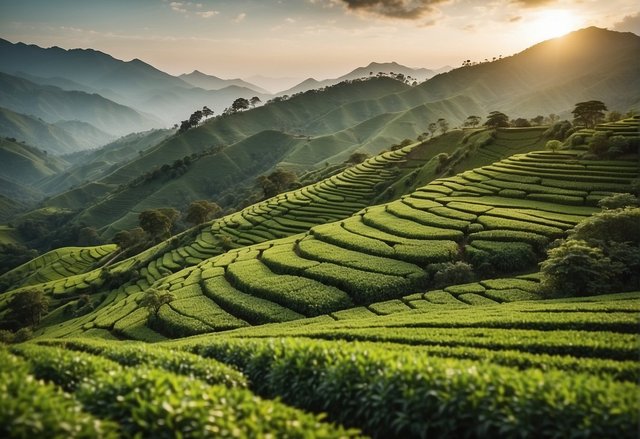Tea farming
A tea estate refers to a large area of land dedicated to cultivating tea plants for commercial production. These estates are common in regions with favorable climates and conditions for tea cultivation, such as moderate temperatures, high humidity, well-drained soils, and sufficient rainfall.
Key Aspects of a Tea Estate
1. Location
Tea estates are typically found in regions with:
• Temperate climates or tropical highlands.
• Well-distributed annual rainfall (1200-1400 mm).
• Altitudes ranging from 600 to 2500 meters, depending on the type of tea.
• Acidic and well-drained soils.
2. Types of Tea Grown
• Camellia sinensis var. sinensis: Commonly grown in China and Japan for green and white teas.
• Camellia sinensis var. assamica: Grown in Assam, India, and parts of Africa for robust black teas.
3. Processes in a Tea Estate
• Planting: High-yield tea clones or seeds are planted in rows with space for maintenance.
• Maintenance: Regular pruning, pest control, and fertilization are essential.
• Harvesting: Tea leaves are plucked manually or mechanically, typically focusing on young leaves and buds.
• Processing: Includes withering, rolling, oxidizing, drying, and grading to produce different tea types.
4. Labor
Tea cultivation is labor-intensive, especially during harvesting, as hand-plucking yields higher-quality tea compared to machine harvesting.
5. Famous Tea Estate Regions
• India: Assam, Darjeeling, Nilgiris.
• China: Yunnan, Zhejiang, Fujian.
• Sri Lanka: Nuwara Eliya, Kandy.
• Kenya: Kericho, Nandi Hills.
If you want detailed guidance on establishing a tea estate or specific aspects of tea farming, feel free to ask!
